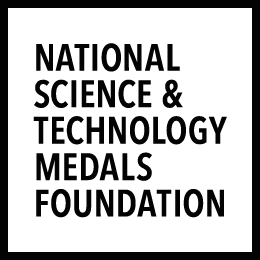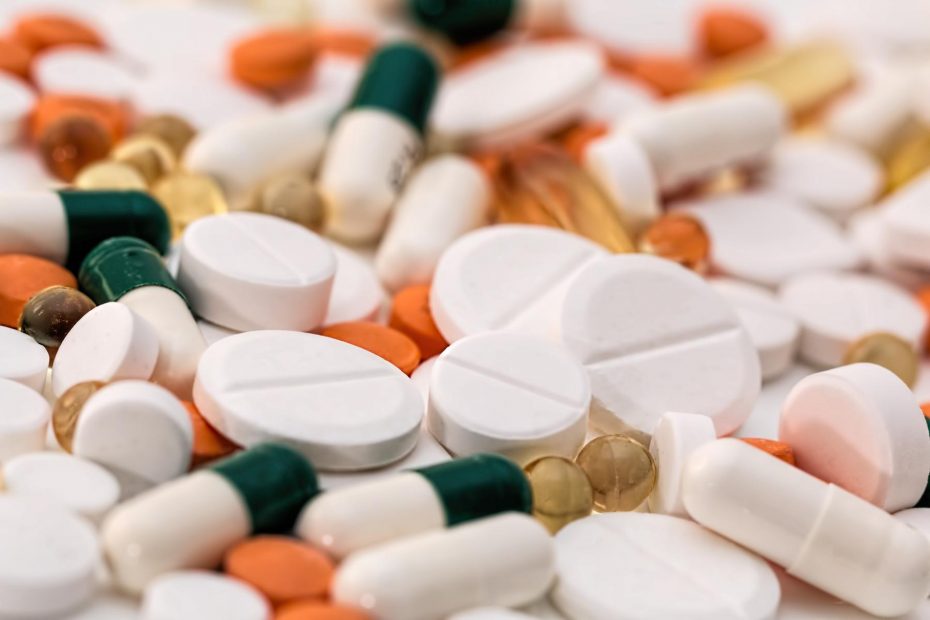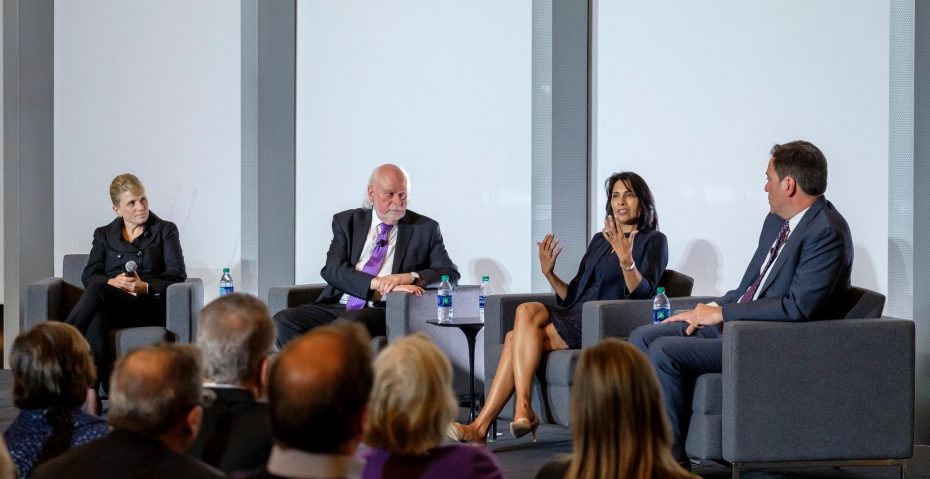In mid-March, chemist Joseph DeSimone got an email from a hospital system in New Orleans that was being inundated with COVID-19 patients. The hospital was looking for a new source of protective face shields for their healthcare workers and wondered whether DeSimone’s 3-D printing company, Carbon, might be able to help. Around the same time, DeSimone learned about the shortage of nasal swabs for COVID-19 tests. He asked his team to start looking into the problem.
Within hours, engineers and materials scientists at Carbon had begun designing nasal swabs and face shields that their cutting-edge, speedy printers could produce. And within days, the products were ready for clinical use.
“It’s been hard work around the clock, just going like crazy,” says DeSimone.
DeSimone is one of a handful of National Medal Laureates who are directly taking on the scientific and clinical challenges of COVID-19. As National Medal winners, these scientists are among the most innovative and pioneering in the country and they are bringing their expertise and drive to fight the coronavirus. In addition, the past work of some medal winners—like the development of the first modern medical respirator by Laureate Forrest Bird, and the founding of biotech company Moderna by Laureate Robert Langer—has become key to fighting the virus.
“Science and technology are critical here but it also takes engineering. This is by definition multi-disciplinary; it takes a lot of work,” says Shirley Ann Jackson, president of Rensselaer Polytechnic Institute and a 2014 winner of the National Medal of Science.
Printing for the Cause
DeSimone, who won a 2013 National Medal of Technology and Innovation, pioneered a type of 3-D printing called “continuous liquid interface production” that was 100 times faster than previous printing technologies. He co-founded Carbon in 2013 to commercialize the technology; the company now has more than 500 employees and its customers include Adidas, Ford, and Johnson & Johnson. Carbon operates on a subscription model; its printers and resin are distributed around the world to medical device companies, sporting goods companies, and automotive factories, among other places.
To make nasal swabs—which DeSimone describes as looking like mascara brushes—the Carbon team turned to their medical device customers for help. They teamed up with one, Resolution Medical, and used a resin that was already being used for dental night guards; the material had already been through biocompatibility testing to ensure its safety.
“We’re not a medical device company, so in this case, it really worked out well that we have customers that are,” says DeSimone.
To print face shields, DeSimone took advantage of Carbon’s 3-D printers scattered around the globe—many under-utilized because of COVID-19 shut-downs. His group designed two models of face shields; one using resins and printers common in their dental customers and the other that could be produced by Adidas using resins typically integrated into shoes. As of mid-April, Carbon’s network of printers was producing 20,000 face shields a week using the two designs.

DeSimone and his colleagues are keen to print anything that can help—including components for ventilators and other respiratory support devices. He says when he invented his printing technology, he never imagined it would be helping tackle a pandemic, but he’s glad to help.
“It’s been really heartwarming that we’ve been able to tap into our network to make a difference,” he says.
Devoting Resources to a Test
Jonathan Rothberg, who won a 2013 National Medal of Technology and Innovation for his contributions to next-generation DNA sequencing, has no shortage of innovative ideas. Rothberg has founded seven medical companies that operate under the umbrella of his startup accelerator, 4Catalyzer. Over the last several months, four of those companies have shifted gears to help direct their technologies and resources toward fighting COVID-19.
“Around a month ago, we realized the pandemic was badly escalating, and we really thought that we were in a unique position to contribute to the crisis,” says Eric Kabrams, one of Rothberg’s colleagues at 4Catalyzer.
Butterfly Network, for instance, which offers a platform to turn a smartphone into an ultrasound device, has put together resources to help clinicians perform lung ultrasounds to monitor the lung impact of the coronavirus. And another of Rothberg’s companies, AI Therapeutics, is using their deep learning platform to sift through data on existing drugs and pinpoint one that may help block the SARS-CoV-2 virus that causes COVID-19.

It’s another project, through Rothberg’s startup Homodeus, that’s generating the most excitement—an at-home SARS-CoV-2 virus test. Kabrams and Rothberg describe the test as something along the lines of an at-home pregnancy test: cheap, and simple for the average person to run, and to interpret.
“We’re trying to simultaneously make the test as easy to use and get it done as quickly as possible,” says Kabrams. The team has been working around the clock to design it and—pending the approval timeline from the Food and Drug Administration, who they’re already working closely with—they are envisioning it being ready for production in a matter of weeks.
At-home #COVID19 diagnostic update. This week demonstrating our test works with patients @Yale. Goal for next month is getting 10,000 first generation kits out for real-world use with our App. Is this a realistic schedule? No. But you miss all the shots you don’t take. #SARSCoV2 pic.twitter.com/LRKHO7wCWH
— Jonathan Rothberg 🧬🧪 (@JMRothberg) April 14, 2020
“As a scientist myself, I’ve been really inspired by the way the scientific community has come together and collaborated really quickly,” says Kabrams.
Lending a Hand with Computing Power
At Rensselaer Polytechnic Institute (RPI), Jackson is also a fan of the collaborations that are tackling COVID-19; she’s helping facilitate some of them. RPI, located in New York state near Albany, has teamed up with COVID-19 clinicians in New York City to develop therapeutics against SARS-CoV-2 and to design a new sterilization system for face masks. Jackson has also offered up RPI’s supercomputer— one of the world’s most powerful—to analyze data on COVID-19.
“We knew that some of the big research organizations were using the Summit supercomputer at Oak Ridge [National Laboratory] but that it was becoming very oversubscribed,” says Jackson. RPI’s Artificial Intelligence Multiprocessing Optimized System (AiMOS) debuted in 2019 as the 24th most powerful supercomputer in the world and can perform eight quadrillion calculations per second. That makes it able to quickly find patterns in large datasets—whether those are epidemiological data on the spread of the coronavirus, libraries of drugs that can be computationally analyzed for matches to SARS-CoV-2, or electronic health records that can be mined to discover who is most vulnerable to the virus.

Since Jackson went public with her computing offer in March, dozens of researchers have submitted COVID-19-related projects for consideration to use AiMOS.
Jackson says this kind of collaborative, multi-disciplinary work has long been one of RPI’s strengths. “You can’t create a research infrastructure overnight,” she says. “It requires collaborations across a range of partners—biomedical institutes, research labs, industry, and government labs.”
Jackson also served as Chairman of the US Nuclear Regulatory Commission in the 1990s, a role which she says gives her a unique perspective on the current pandemic—and makes RPI uniquely prepared to help with COVID-19.
“I led an agency that was prepared to respond in the case of a global threat—a nuclear event,” says Jackson. “Ironically, because of that, we actually practiced things like how to link up our resources with the White House and FEMA [the Federal Emergency Management Agency].”
With that preparedness engrained in her, Jackson is ready to keep steering RPI toward projects that can support COVID-19 relief efforts—and future pandemics. It’s the same mindset that other National Medal Laureates and other scientists around the world are embracing; they’re ready to use their expertise to help however they can.




